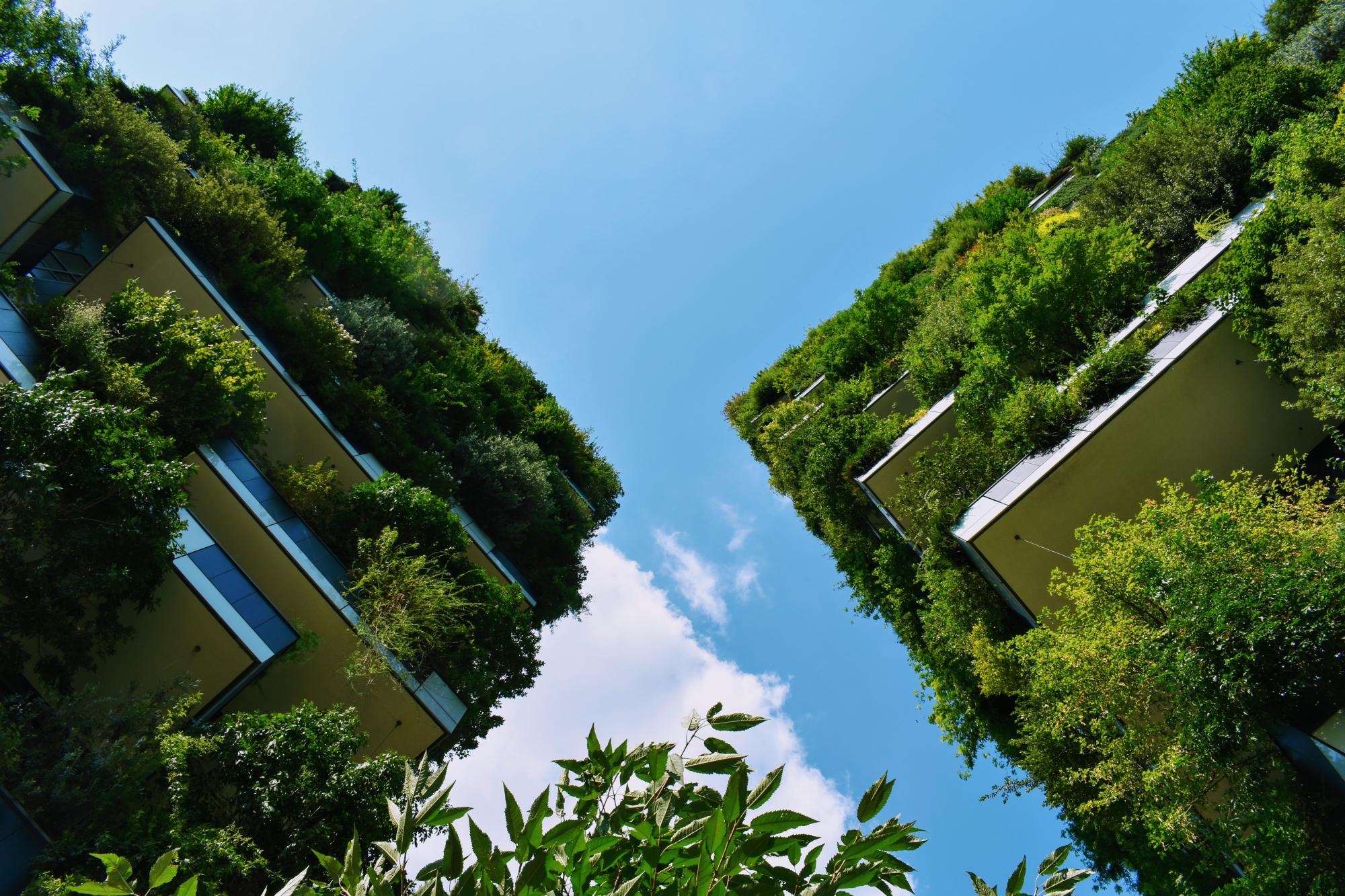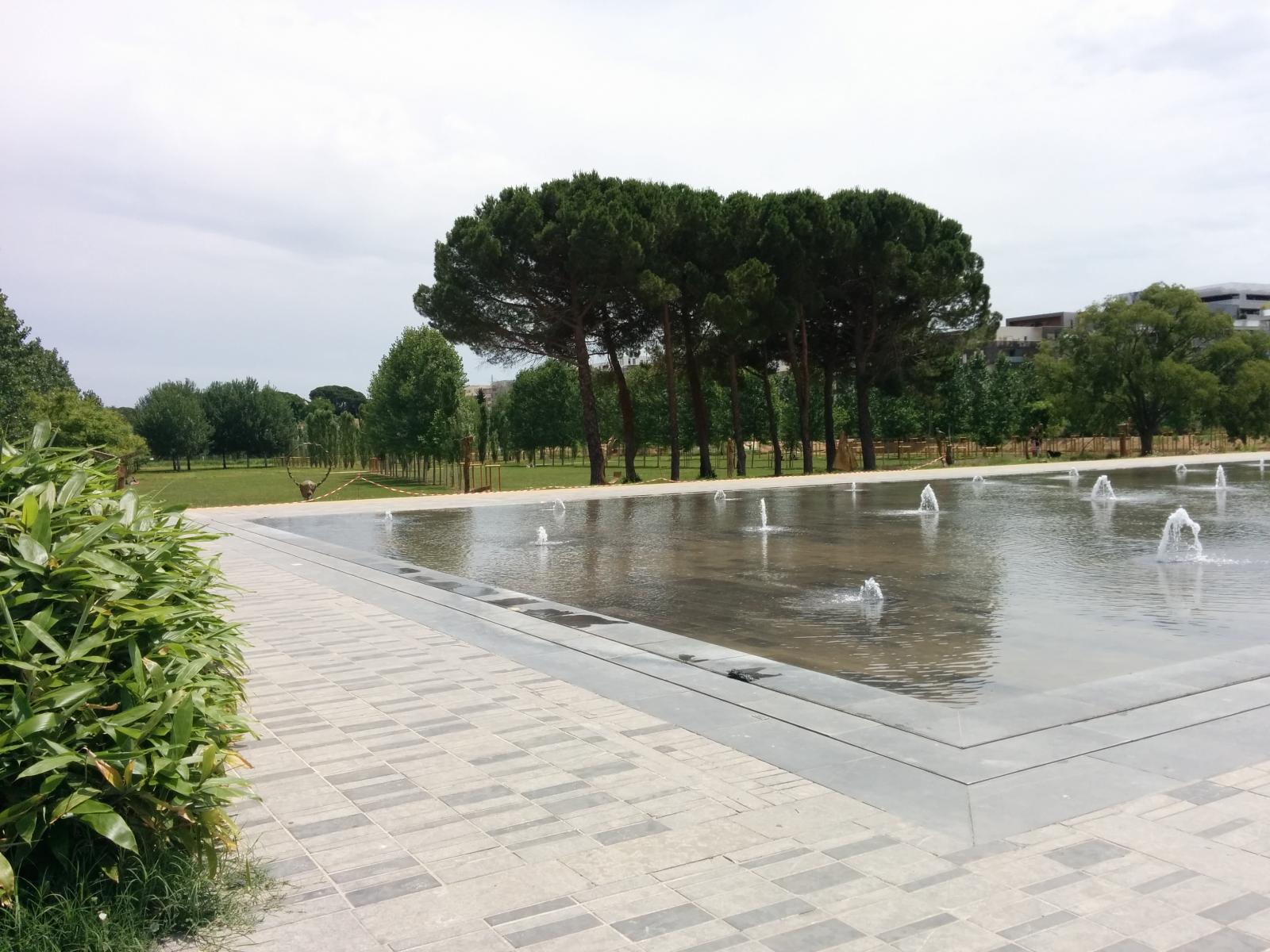Last updated: August 2022
Parc Marianne is an ecodistrict that aims to address multiple challenges such as climate action for adaptation, environmental quality, flooding, and in response to the high population growth in Montpellier. Parc Marianne is connected to public transportation, has bicycle lanes and car parks, and the sidewalk is shared between pedestrians and bicyclists and structured with trees and other greenery. The park was certified with the ecodistrict label in 2015 following requirements like environmental sustainability, thermal performance, quality of life, nature and biodiversity, and mobility (Ref. 1). Parc Marianne is a mixed neighbourhood with an ability to combine city and nature, quality of life and centrality (Ref. 2).
Overview
Nature-based solution
- Community gardens and allotments
- Horticulture
- Green areas for water management
- Other
- Grey infrastructure featuring greens
- Alley or street trees and other street vegetation
- Green playgrounds and school grounds
- Parks and urban forests
- Large urban parks or forests
- Pocket parks/neighbourhood green spaces
- Green corridors and green belts
Key challenges
- Climate action for adaptation, resilience and mitigation (SDG 13)
- Climate change adaptation
- Climate change mitigation
- Coastal resilience and marine protection (SDG 14)
- Coastal protection / hazard mitigation
- Green space, habitats and biodiversity (SDG 15)
- Habitat and biodiversity restoration
- Habitat and biodiversity conservation
- Green space creation and/or management
- Regeneration, land-use and urban development
- Regulation of built environment
- Promote natural styles of landscape design for urban development
- Water management (SDG 6)
- Flood protection
- Stormwater and rainfall management and storage
- Cultural heritage and cultural diversity
- Promotion of cultural diversity
- Health and well-being (SDG 3)
- Enabling opportunities for physical activity
- Creation of opportunities for recreation
- Inclusive and effective governance (SDG 16)
- Effective management
- Social justice, cohesion and equity (SDG 10)
- Social interaction
- Environmental and climate justice
- Economic development and employment (SDG 8)
- Economic development: industry
- Real estate development
- Sustainable consumption and production (SDG 12)
- Sustainable consumption
- Sustainable production
Focus
Creation of new green areas, Creation of semi-natural blue areas, Knowledge creation and awareness raising
Project objectives
The Parc Marianne Ecodistrict aims at:
- Ensuring sustainable urban development;
- Respond to the strong demand for housing;
- Promote social mix and functions in neighbourhoods, a quality environment, taking into account the issues of travel and service through the public transport network;
- Address pressures related to water management, environmental quality and climate change; (Ref.1)
- Also includes key issues related to quality of life, economic development, mobility and biodiversity (Ref.2)
Implementation activities
The new district consisting of red, grey, green and blue infrastructure, such as housing, business, college, public square, cultural equipment, park, retention basin, protected woodland, and a green corridor along the river.
- 1.200 trees have been planted;
- An eco-pasture is planned to be created in the park in 2018. Sheep and a few goats kept by a shepherd will be responsible for the maintenance of the park (Ref.1).
an ecodistrict/sustainable housing community: that aims to address multiple challenges such as climate action for adaptation, environmental quality, flooding, and in response to the high population growth in Montpellier. (Ref 1) ; was certified with the ecodistrict label in 2015 following requirements like environmental sustainability, thermal performance, quality of life, nature and biodiversity, and mobility (Ref. 1); - Address pressures related to water management, environmental quality and climate change; (Ref.1)
Climate-focused activities
Climate change adaptation:
- Increase or improve urban vegetation cover to help reduce outdoor temperature
- Protect coastal and freshwater ecosystems to prevent coastal erosion and pollution
- Implement sustainable urban drainage infrastructure (e.g. to make space for water)
Climate change mitigation:
- Invest in public transport/bicycle infrastructure as a means to prevent car use
Biodiversity conservation or restoration-focused activities
Biodiversity conservation:
- Protect and enhance urban habitats
- Promote environmentally-sound development in and around protected areas
- Create new habitats
- Reduce negative impacts and avoid the alteration/damage of ecosystem
- Protect species
- Undertake specific measures to protect species
Biodiversity restoration:
- Restore species (native, endangered, or unspecified)
- Restore native species
- Restore valued species
- Other
Main beneficiaries
- Citizens or community groups
- Other
Governance
Management set-up
- Co-governance with government and non-government actors
Type of initiating organisation
- Local government/municipality
Participatory approaches/ community involvement
- Unknown
Details on the roles of the organisations involved in the project
Contracting authority: City of Montpellier
Operation manager: SERM (delegated contractor mandated by the City of Montpelier)
Architect & urban designer: Architecture-Studio
Co-architect: Imagine
Landscape designer: Traverses
Engineering: Egis France
Project implemented in response to ...
... an EU policy or strategy?
Unknown
... a national policy or strategy?
Unknown
... a local policy or strategy?
Yes
("In 2005, to continue restructuring, with an objective of sustainable development, neighbourhoods classified as sensitive urban or territory of Grand Projet de Ville (GPV), the City of Montpellier has developed an urban renewal project in partnership with Local Government and the Caisse des Dépôts." (Ref.2))
Financing
Total cost
€500,000 - €2,000,000
Source(s) of funding
- Public local authority budget
- Corporate investment
Type of funding
- Unknown
Non-financial contribution
Unknown
Impacts and Monitoring
Environmental impacts
- Climate change
- Reduced emissions
- Water management and blue areas
- Increased protection against flooding
- Green space and habitat
- Promotion of naturalistic styles of landscape design for urban development
- Increased green space area
- Increased conservation or restoration of ecosystems
- Reduced biodiversity loss
- Increased number of species present
- Other
Economic impacts
- Increase of green jobs (e.g. paid employment positions)
- Increased market share for green economies
- Other
Socio-cultural impacts
- Social justice and cohesion
- Improved liveability
- Increased opportunities for social interaction
- Increased sustainability of agriculture practices
- Health and wellbeing
- Gain in activities for recreation and exercise
- Cultural heritage and sense of place
- Promotion of cultural diversity
- Other
Type of reported impacts
Achieved impacts
Presence of formal monitoring system
Unknown
Presence of indicators used in reporting
No evidence in public records
Presence of monitoring/ evaluation reports
No evidence in public records
Availability of a web-based monitoring tool
No evidence in public records
References
1. Werner, A. (2018). "Snapshot - Montpellier: Parc Marianne Ecodistrict". Available at: Source link (Accessed: August 3, 2020).
2. Construction 21 International (2015) Parc Marianne ecodistrict, Montpellier. Available at: Source link (Accessed: August 3, 2020).
3. Ministere de la transition ecologique (n.d). "Demarche Ecoquartier: Parc Marianne". Available at: Source link (Accessed: August 3, 2020).
2. Construction 21 International (2015) Parc Marianne ecodistrict, Montpellier. Available at: Source link (Accessed: August 3, 2020).
3. Ministere de la transition ecologique (n.d). "Demarche Ecoquartier: Parc Marianne". Available at: Source link (Accessed: August 3, 2020).




